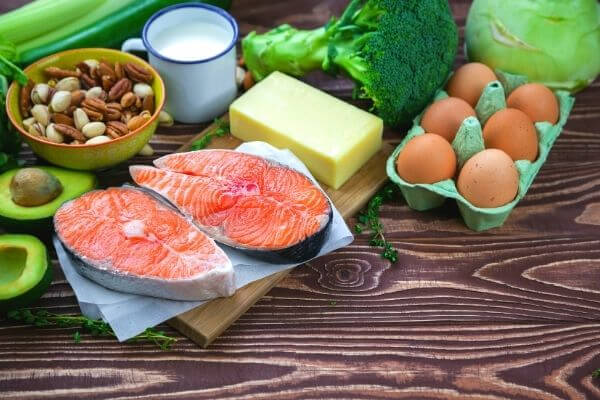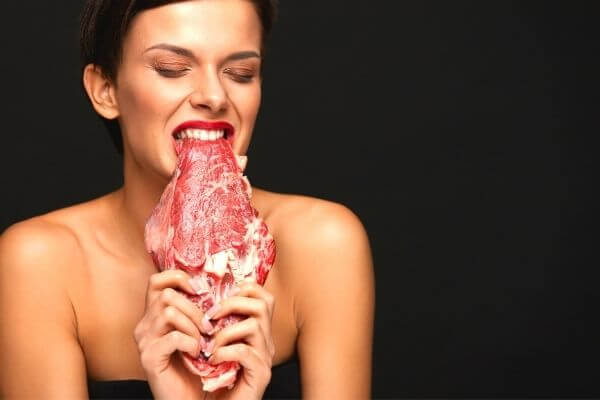You are what you eat.
This has never been a trendier concept than it is now.
The internet's stranglehold on our way of life, the rise of cooking shows as a genre of television unto themselves, and social media's influence causing us to want to show everyone what we're eating, have combined to create a culture that is literally obsessed with diets.
If you're confused about the ever-growing lexicon of food, you're not alone. Paleo, keto, intermittent fasting, raw vegan, whole-foods plant-based, and now, the flexitarian diet.
What the heck does it all mean?
Today we're going to talk about this last one: the flexitarian diet. If you haven't heard of it, you're not alone.
If you're intrigued by it, you're not alone.
And if you want more information... you're not alone, and we're here to help.
What’s a Flexitarian?

This word entered the food-obsessed dictionary in 2009.
Nutritionist Dawn Jackson Blatner wrote a book called, you guessed it, "Flexitarian," to promote her views on diet.
OK, actually, the book was called "The Flexitarian Diet: The Mostly Vegetarian Way to Lose Weight, Be Healthier, Prevent Disease and Add Years to Your Life."
But that's rather a mouthful.
In any case, this book realized that what motivated the eating habits of a large chunk of Westerners was weight loss, Blatner sought to improve eating habits while avoiding forcing a drastic, irreversible lifestyle change.
The flexitarian diet is her answer to rigid diet plans that are begun on January 1st and abandoned before the 15th.
It's the mostly-healthy eating plan with a built-in cheating system, a safety-net, if you will.
Now, the most staunch vegans are not going to be on board with this idea, I know. But hear me out for a second.
Just as vegans are often former vegetarians who became interested in eating more ethically after dabbling, perhaps our newest vegetarians (aka prospective vegans) are going to be flexitarians. In other words, this plan can be a stepping stone.
So how do you define flexitarian?
I'll tell you.
The Flexitarian Definition
Blatner's originally diet was actually a diet plan meant to reduce consumption of animal products - complete with menus and recipes for things like Caribbean black bean couscous and grilled cheese and rosemary-tomato sandwiches.
Blatner's diet is flexible (obviously, given the name), but she does create some loose parameters that adherents can choose to follow on their journey to eat meat less frequently.

For example, she suggests that those who are just starting out as flexitarians try out the "beginner flexitarian" plan.
This plan dictates that participants eat meat five days a week, and remain meatless the other two days.
The only other parameter is that you eat no more than 26 ounces of meat in total during those five days.
The classic deck-of-cards-sized serving of meat is about 3 ounces.
Once you're used to the beginner tier, you can graduate to "advanced flexitarian."
When you're an advanced flexitarian, you can eat no more than 18 ounces of meat total during three or four days of the week.
The remaining days should be spent eating a vegetarian diet.
An "expert flexitarian" will eat no more than 9 ounces of meat over two days per week, sticking to a vegetarian diet for the remaining five days.
For those who prefer not to weigh their meat, Blatner offers this handy guide which assumes three meals per day or 21 meals each week:
Blatner's plan may be helpful for those who want to transition from a traditional omnivore diet to a mostly or fully vegetarian diet, or who want to simply reap the health benefits that can result from consuming fewer animal products and more whole grains.
Her flexitarian plan can also be helpful to those seeking weight loss and its accompanying health benefits.
But the word flexitarian has evolved since she wrote the book and there are now infinite ways to follow a flexitarian diet.
The answer to the questions "what's a flexitarian?" or "what is a flexitarian diet?" is now "whatever you want it to be."
Current Usage of the Term

These days, the flexitarian definition is variable.
Combining the words flexible and vegetarian, the flexitarian diet is simply a plant-based diet with the occasional addition of meat, or a semi-vegetarianism.
Flexitarians can't really call themselves semi-vegans because "vegan" really connotes a strict abstention from all animal products.
So flexitarians are also known as "flexible vegetarians," "casual vegetarians" or, oxymoronically, "vegivores." Quite simply, there are no rules.
Some flexitarians will have a meat-free meal once per week while others will only eat meat on rare occasions.
The one constant is that a person following a flexitarian diet will eat less meat than they used to.
The flexitarian diet is increasing in popularity, especially with people who do not want to commit to a full vegetarian or vegan lifestyle but who are starting to understand the benefits of eating mostly vegan.
It allows them flexibility that they can adapt to their lifestyle, social life or health conditions.
Surprisingly the adepts of flexitarianism are not only people who want to reduce their meat consumption but also vegetarians or vegans who decide to reintroduce meat into their diet.
While the vegan diet and lifestyle comes with an ethical viewpoint and value judgment, a flexitarian is just going to be focused on avoiding most meat for health purposes.
Why Do People Decide to Reduce Their Meat Consumption?
The motivations behind adopting a flexitarian lifestyle are quite diverse.

Veganism is tough.
It requires sacrifice, careful decision-making and despite several major brands offering more vegan options, your choices are still limited.
Being a flexitarian is less rigid and allows you to make your contribution to helping the planet and eating healthier, while still allowing for the odd, drunken doner kebab.
But there has been some furor over the growth of flexitarianism.
Some people have claimed that it’s not a thing, or it’s just a cynical marketing ploy to pander to guilty meat-eaters.
So what’s the answer? Is it legit? And are there any benefits?
Nutritionist Charlotte De Curtis thinks there are.
"It’s much less strict and often easier to adhere to than a strict vegan diet," De Curtis tells Metro.co.uk. "And usually, there aren’t any strict measures like counting calories or macros. The biggest potential benefit is the fact that a typical Western diet is a red meat, dairy, artificially sweetened and processed foods with minimal plants. A flexitarian approach will likely see an increase in micronutrients being consumed (vitamins and minerals), which is a huge benefit for overall health."
If you're eating a typical Western diet and would like to try a flexitarian diet, we have a few tips.
First, set yourself up for success. It's relatively easy to avoid meat and still eat junk.
This won't help you at all, even if you're eating fewer animal products. So if you try a flexitarian diet, focus on whole grains and vegetables as close to their natural state as possible.
Try to minimize the amount of animal products you consume in a meal by maximizing health, fiber-rich options like cruciferous vegetables, leafy greens, legumes and whole grains.
These will keep you full whether you're on a flexitarian diet or any diet. they also have proven health benefits and will protect you from disease.
So whether you're seeking to eventually transition to a vegetarian or vegan diet, or you just want to jumpstart a healthier lifestyle, consider the flexitarian diet as a way to "ease in" to more ethical and healthier eating, while not feeling deprived.
This diet is not necessarily for everyone, but it can definitely benefit those who aren't quite ready to jump into the vegetarian or vegan end of the pool with both feet.
Give it a try!

